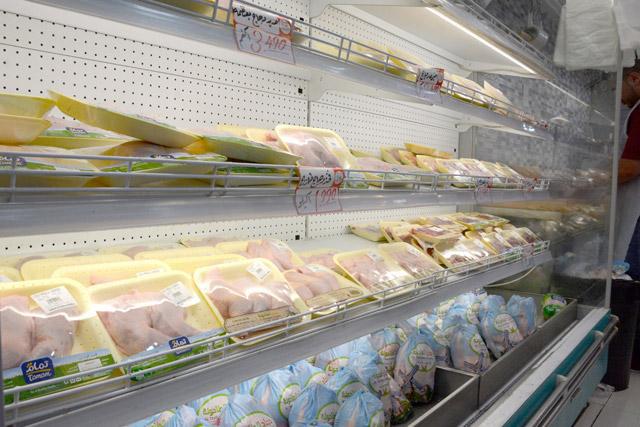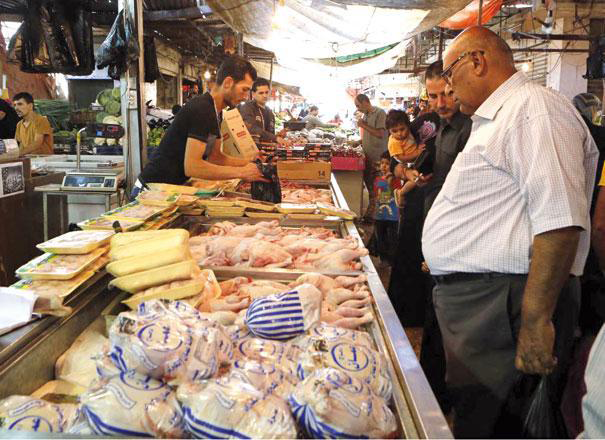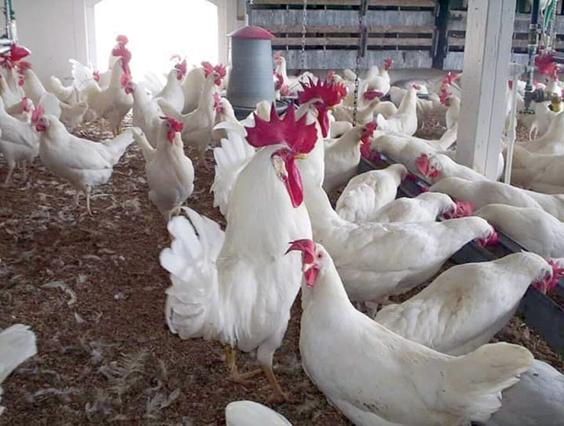You are here
Poultry prices, demand skyrocket during Ramadan
By Rayya Al Muheisen - Apr 05,2022 - Last updated at Apr 05,2022

Prices of poultry have skyrocketed during Ramadan due to an increase in demand as well as an increase in the prices of chicken feed, according to the Poultry and Feed Investors Association (File photo)
AMMAN — Prices of poultry have skyrocketed during Ramadan due to an increase in demand as well as an increase in the prices of chicken feed, according to the Poultry and Feed Investors Association (PFIA).
“The demand for chicken increased by 40 per cent during the last week,” PFIA President Abdel Shakoor Jamjoum told The Jordan Times on Tuesday.
Jamjoum added that the daily average local demand for chicken does not usually exceed 700,000 chickens, but during the past week the market saw a demand that surpassed the numbers that chicken farms can provide.
He said the average demand for Ramadan has so far exceeded 900,000 chickens a day.
Prices of chicken feed have also increased dramatically as a result of the eastern European crisis, Jamjoum said.
He said maize used to be sold for JD200 a tonne, while it is now only sold for JD350 a tonne. Soybeans are now sold for JD560 a tonne, while they used to be sold for JD300 a tonne.
The government has set a price cap of JD1.65 per kilo for chicken to be sold to citizens, Jamjoum said, but PFIA expects the demand to drop by the end of this week.
He advised the public to “be rational” and buy quantities they will consume, especially since food waste “tends to be a problem” during Ramadan, he said.
“The global increase in chicken feed prices is among the causes of the substantial hike in the price of chicken in Jordan,” Ghanem Mitry, who owns a livestock farm, told The Jordan Times.
Mitry added that transportation costs have also contributed to the problem, as well as soybean prices, which have almost doubled.
He said the rise in fuel prices has only made things worse, also impacting the production cost of poultry units.
“Consumers are buying chicken in limited quantities or reducing their consumption in some cases,” a purchasing manager at one of Amman’s supermarkets who preferred to remain anonymous, told The Jordan Times.
He added that the purchasing power is low, and people are not consuming chicken the same way they used to. However, he said consumption has improved during the past week due to an increase in demand during Ramadan.
“The consumers’ purchasing power weakened in terms of goods in general, especially food supplies,” he noted.
Hashem Nasser, an owner of a fried chicken restaurant, said that the increase in almost all food items’ prices, especially poultry prices, is slowing down his business.
“We cannot raise our prices to sustain business,” Nasser said.
Nasser said his restaurant has lowered the quantity of chicken provided for each meal to retain customers.
“The cost of chicken, cooking oil and vegetables is ‘insane’ for any middle-income household,” Haneen Jafary, a homemaker, told The Jordan Times.
She added that it is cheaper to buy junk food than to cook a healthy meal. “It is definitely bad for people’s health, but a middle-income household can’t afford to eat chicken or meat every day,” she said.
Despite several attempts by the Jordan Times to contact the Farmers’ Union to ask about the increase in vegetables prices, they were not available to comment.
Related Articles
AMMAN — Demand for chicken and eggs decreased by about 40 per cent in the local market when compared to the month of Ramadan and the Eid Al
AMMAN — The Ministry of Industry, Trade and Supply on Monday announced the cancellation of the price ceiling on chicken.“The removal of the
AMMAN — Social media users have launched an online campaign calling for a national boycott of poultry and eggs.The hashtag “#Together



















